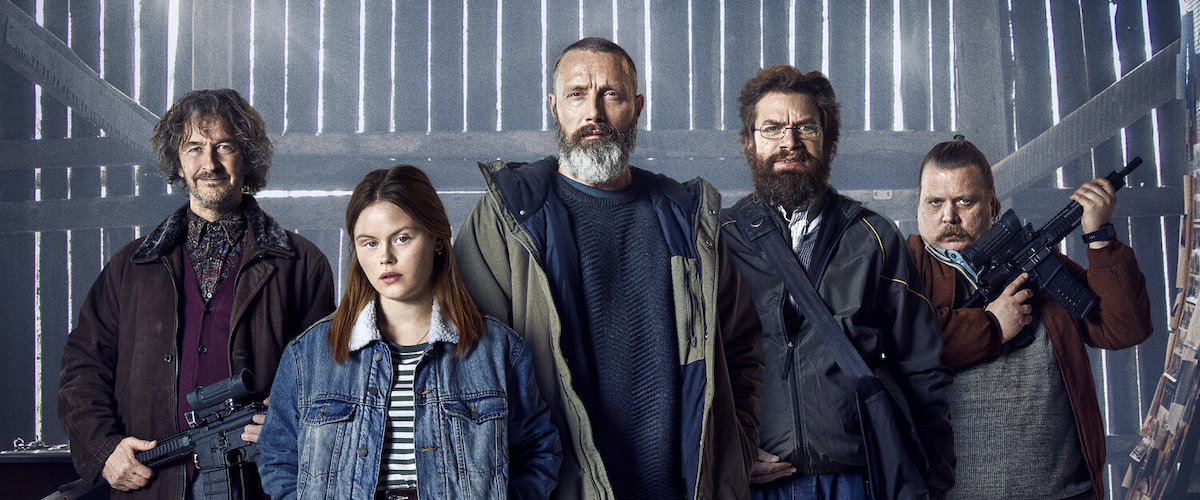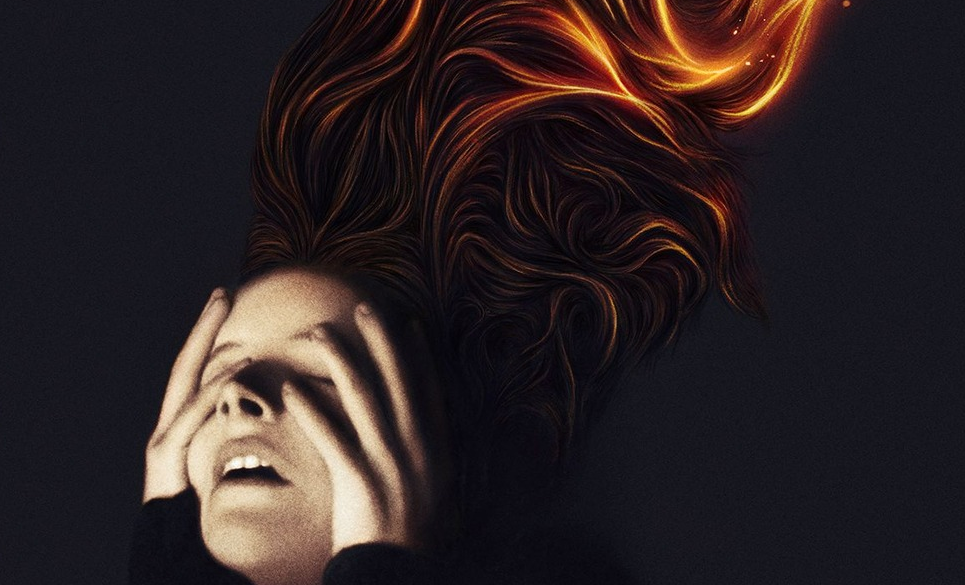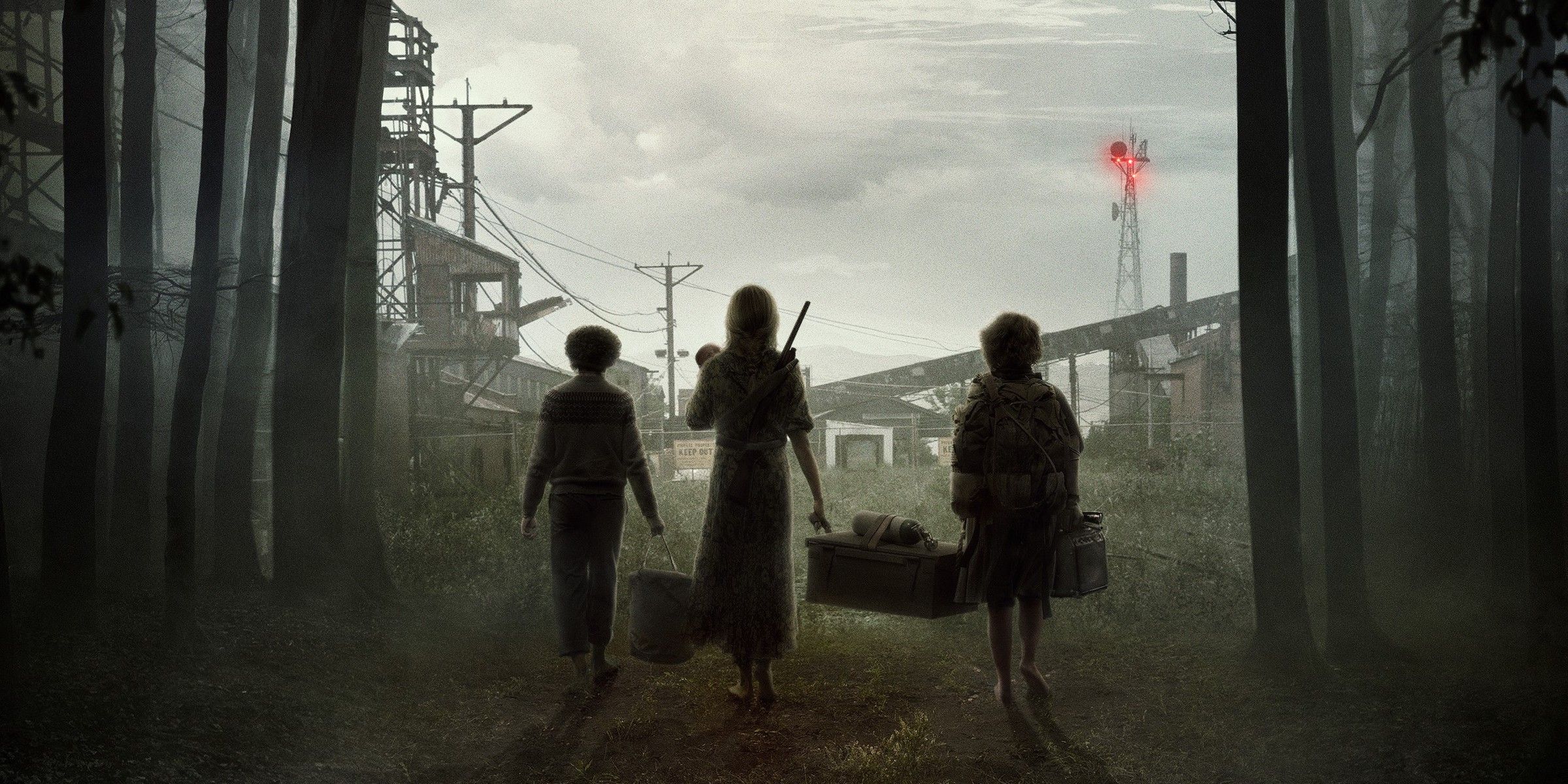Big year! In fact, horror may have saved movies this year. That’s what lured people back to cinemas —A Quiet Place Part II, Candyman and other genre films. And even though we don’t entirely consider Last Night in Soho a horror film, Edgar Wright’s giddy take on giallo was a blast in the theater.
But horror also flooded streaming services, where you could find some of the most amazing bloody treasures in 2021: Jakob’s Wife and Fried Barry made you glad you had a Shudder subscription, and Double Walker proved true indie horror was alive and well.
It took some time to boil it down, but here are our 10 favorite horror films of 2021.
10. Titane
Julia Ducournau’s Palme d’Or-winning Titane is alive with alternating color palettes, pulsating sounds and endless shocks of body horrific visuals. The sudden bursts of violence are downright pedestrian alongside the parade of boldly squirm-inducing clashes of flesh, bone and other.
But as she did with her first feature, Raw, Ducournau finds humanity clawing out from the inhumane. Truly unforgettable performances from Vincent Lindon and Agathe Russell provide intimate examples of the extremes that even the most damaged souls are capable of in the search to care and be cared for.
It may not be shy about homages and influences, but Titane is indeed its own ferocious animal. Open the cage look the F out.
9. Caveat
The room is dark, decrepit. A wild-eyed woman with a bloody nose holds a toy out in front of her like a demon slayer holds a crucifix. The toy – what is it, a rabbit? A jackalope? – beats a creepy little drum. Faster. Slower. Hotter. Colder.
This is how writer/director Damian Mc Carthy opens Caveat and I am in. An expertly woven tapestry of ambiguity, lies and misunderstanding sink the story into a fog of mystery that never lets up. McCarthy unveils a real knack for nightmarish visuals, images that effortlessly conjure primal fears and subconscious revulsion.
Mc Carthy does a lot with very little, as there are very few locations and a total of three cast members—all stellar. You won’t miss the budget. Mc Carthy casts a spook house spell, rattling chains and all, and tells a pithy little survival story while he’s at it.
8. Psycho Goreman
Endlessly quotable and boasting inspired creature design and a twisted Saturday Morning Kidventure tone, Psycho Goreman is a blast
Fans of writer/director Steven Kostanski’s 2016 breakout The Void (a perfect blend of Lovecraft and Halloween 2) might not expect the childlike lunacy and gleeful brutality of Psycho Goreman (PG for short), but they should. His 2012 gem Father’s Day (not for the easily offended) and his 2011 Manborg define not only his tendencies but his commitment to tone and mastery of his material.
His ensemble here works wonders together, each hitting the comedic beats in Kostanski’s script hard enough that the goretastic conclusion feels downright cheery. This movie could not be more fun.
7. The Retreat
The Retreat shows how satisfying it can be when cabin-in-the-woods horror is done well.
Director Pat Mills builds an air of dread and tension minus the usual gimmickry. Writer Alyson Richards pens a lean, mean, bloody survival thriller that boasts some welcome surprises and a smart social conscience. Realized via strong performances from Tommie-Amber Pirie and Sarah Allen, heroes Renee and Val’s relationship feels perfectly authentic, with a sexuality that’s never exploited by a leering camera. And while you may be reminded of 2018’s What Keeps You Alive, there is a critical difference.
The couple in that film could have been heterosexual, and it still would have worked. But here, the fact that it is a same sex couple being hunted matters very much to the story at work. It enables Richards and Mills to anchor a revenge horror show with a satisfying metaphor for the violent threats LGBTQ folks continue to face every day.
6. A Quiet Place Part II
For a few well-placed and important seconds, there it is: the much-discussed nail from A Quiet Place. And like most everything else in writer/director John Krasinki’s thrilling sequel, the nail’s return carries weight, speaking visually and deepening our investment in these characters’ terrifying journey.
There is no shortage of exhilarating, squirm-inducing and downright scary moments, but Krasinski instills it all with an impressive level of humanity. He gives the enterprise a welcome retro feel and his flair for visual storytelling has only strengthened since the last film.Paragraph
AQPII is lean, moves at a quick clip, thrills with impressive outdoor carnage sequences and yet commands that same level of tension in its nerve- janglingly quiet moments. Krasinski had a tough task trying to follow his 2018 blockbuster, one made even tougher now having to prove the sequel was worth saving for a theaters-only release. On both counts, we’d say he nailed it.
5. Censor
It’s 1985, Thatcher’s England: an era when controversial films hoping to make their way to screens big and small found themselves more butchered than their characters. Writer/director Prano Bailey-Bond and co-writer Anthony Fletcher evoke such a timestamp with this film, not just in the look and style, but with the social preoccupation.
Censor is a descent into madness film, but its deep love and understanding of the genre play a central role in this madness. Niamh Algar’s performance as the video nasty censor in question is prim and sympathetic, deliberate and brittle. It’s clear from the opening frame that Enid will break. But between Algar’s skill and Bailey-Bond’s cinematic vision, the journey toward that break is a wild ride.
4. My Heart Can’t Beat Unless You Tell It To
Making an unnervingly assured feature film debut, writer/director Jonathan Cuartas commingles The Transfiguration’s image of lonely, awkward adolescence with Relic’s horror of familial obligation to create a heartbreaking new vampire tale.
Many things are left unsaid (including the word “vampire’), and My Heart Can’t Beat Unless You Tell It To confines itself to the daily drudgery of three siblings. Dwight (Patrick Fugit) longs to break these family chains, but sister Jessie (Ingrid Sophie Schram) holds him tight with shame, love, and obligation to little brother, the afflicted Thomas (Owen Campbell).
What could easily have become its own figurative image of the masculine longing for freedom mines far deeper concerns. Cuartas weaves loneliness into that freedom, tainting the concept of independence with a terrifying, even dangerous isolation that leaves you with no one to talk to and no way to get away from yourself.
3. Lamb
Among the many remarkable elements buoying the horror fable Lamb is filmmaker Valdimar Jóhannsson’s ability to tell a complete and riveting tale without a single word of exposition. Rather than devoting dialog to explaining to us what it is we are seeing, Jóhannsson relies on impressive visual storytelling instincts.
His cast of three – well, four, I guess — sells the fairy tale. A childless couple working a sheep farm in Iceland find an unusual newborn lamb and take her in as their own child. As is always the way in old school fables, though, there is much magical happiness but a dire recompense soon to come. It is an absolutely gorgeous, entirely unusual and expertly crafted gem of a film. You should see it.
2. Candyman
This new Candyman is the most delicious brand of horror sequel. Thanks to the startling vision of director/co-writer Nia DaCosta and producer/co-writer Jordan Peele, it is a film that honors its roots but lives so vibrantly in the now that it makes you view the 1992 original from an urgent new angle.
DaCosta’s savvy storytelling is angry without being self-righteous. Great horror often holds a mirror to society, and DaCosta works mirrors into nearly every single scene in the film. Her grasp of the visual here is stunning—macabre, horrifying, and elegant. She takes cues from the art world her tale populates, unveiling truly artful bloodletting and framing sequences with grotesque but undeniable beauty. It’s hard to believe this is only her second feature.
By the time a brilliant coda of sadly familiar shadow puppet stories runs alongside the closing credits, there’s more than enough reason for horror fans to rejoice and…#telleveryone.
1. Saint Maud
Maud (an astonishing Morfydd Clark) has some undefined blood and shame in her recent past. But she survived it, and she knows God saved her for a reason. She’s still working out what that reason is when she meets Amanda (Jennifer Ehle), a former choreographer now crumbling beneath lymphoma.
Ehle’s performance strikes a perfect image of casual cruelty, her scenes with the clearly delicate Maud a dance of curiosity and unkindness. Clark’s searching, desperate performance is chilling. Writer/director Rose Glass routinely frames her in ways to evoke the images of saints and martyrs, giving the film an eerie beauty, one that haunts rather than comforts.
Glass’s film treads the earth between mental illness and religious fervor, but its sights are on the horror of the broken-hearted and lonesome.




